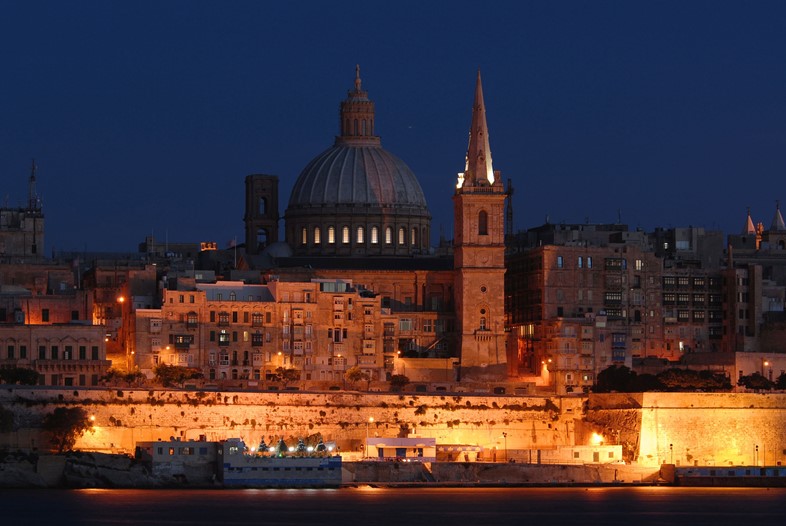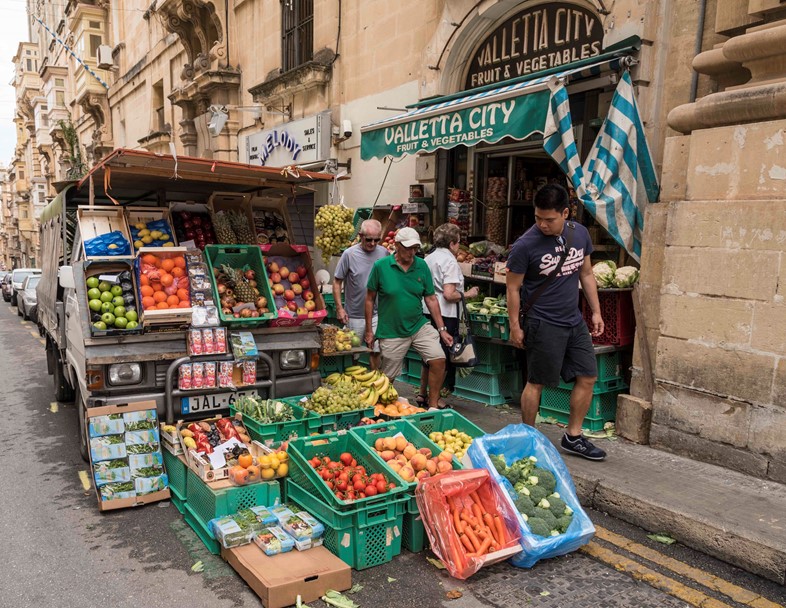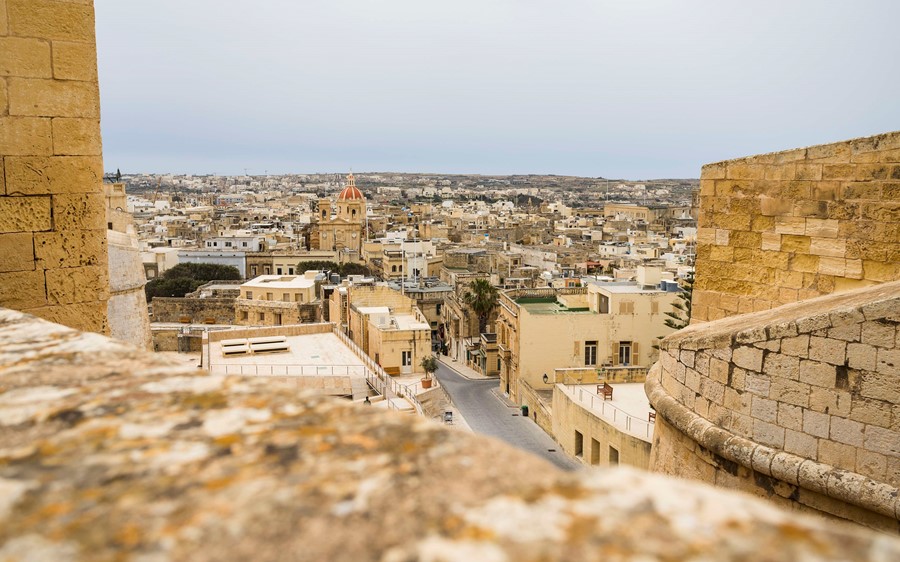Located between Sicily and Tunisia, Malta is a particularly good destination for a spring and early summer trip: here are the best things to see, do and eat in Malta
Introducing a series of alternative city guides, specially curated for the cultivated traveller.
Compiling a city guide for one particular city in Malta is a difficult task, for the sole reason that Malta itself is so small – there is no way to give a good sense of this without pointing to it on a map: it is well over 200 times smaller than Ireland – and its ‘cities’ are so tiny, overlapping and interlinked, that treating each one as distinct feels illogical. Indeed, locals tend to refer to each ‘city’ more as areas or districts than cities. Even the island to the north, Gozo, is only a 45-minute ferry away from its capital Valletta, a distance that would take you halfway across most major cities. As such, this is a guide to Malta.
It is also a slightly timely guide, with some focus on the country’s first art biennale, which runs from mid-March 2024 through 31 May 2024. Helmed by artistic director Sofia Baldi Pighi, this ambitious biennale brought together artists from around the world for a sprawling country-wide series of thoughtfully curated pavilions, many of which are located in Malta’s UNESCO world-heritage sites. For this mapping out of historic Malta through site-specific contemporary art alone, the biennale feels like a particularly good time to visit. It is also a brilliant introduction to the country’s energetic local art scene, which felt strikingly lively, with a strong feeling of community. Then finally there is the weather: situated between Sicily and Tunisia, Malta is hot and brightly sunny nearly year-round, making it a particularly good destination for a spring and early summer trip.

MUŻA
Malta’s National Community Art Museum, whose collection spans from the 15th century through to the 21st, MUŻA also houses a very good restaurant. After browsing, you can sit out in its airy, light-filled courtyard and enjoy a refined menu of Mediterranean-leaning dishes, running through lunch and dinner.
Then, a two-minute walk down Melita street, it’s worth calling in to the National Museum of Archeology, especially fascinating in a place so informed by its landscape. Biennale highlights here include Hybrid Landscape is Isolated, by the Korean artist Gijeong Goo. A strange, mesmerising video installation it merges Jeju Island with the Maltese Islands.
A final stop on this culture walk (especially if, like me, you love to call into churches when anywhere vaguely European; I particularly loved the churches in Malta for their chequered marble floors) could be Tal-Pilar Church, an eight-minute walk north-ish. There, until late March you can catch an edible body of Christ by Andrea Ferrero and a K-pop-themed video installation by Dew Kim.
Grand Master’s Palace
The main square in Valletta is dotted with sights, including the National Library and the Grand Master’s Palace, both regal, well-worn spaces that managed to survive the bombing campaigns of World War II. Both spaces have been subverted for the biennale, with works along the theme of ‘Matri-archive of the Mediterranean’. Alternative feminist archives sit alongside video works that give prominence to ageing female experience; cumulatively they generate knowledge outside of patriarchal production.
Legligin
For classic Maltese cuisine in an atmospheric setting, it has to be Legligin. From its ubiquitous chequered floor, to its extensive wine list and tasting menu of classics like Maltese sausage and homemade ravioli, it’s not off-the-beaten-track but it is a must-try. Then, having sampled classic cooking, try Rubino for modern cooking using the best Maltese produce. Situated in a former sweet shop, you can sample their homemade pasta in a chic, pared back setting. Two minutes down the street from Rubino, for a lunch that nods to Malta’s adjacency to Sicily, head to Trattoria da Pippo.

Underground Valletta
Before it became a ‘city’ Valletta was a fortress, built with an elaborate network of underground tunnels to help facilitate everything from troop movement to water storage. This subterranean relationship has continued through Valletta’s life; during particularly intense bombing campaigns in World War II the population literally moved underground, further expanding the space. Today, you can climb down to visit through an unassuming manhole outside MUŻA. Here, for the duration of the biennale, you can also watch the Italian artist and filmmaker Rosa Barba’s 2021 work Inside the Outset: Evoking a Space of Passage. A meditation on sea and construction, it includes footage filmed underwater – in the large but confined, tunnel space you have the feeling of being in a cave, or on the seabed, nearly.
Maori Bar
Strait Street has the biggest concentration of bars in Valletta, and is worth a visit for spots like Tico Tico, but for something more off-kilter walk about ten minutes north from the centre of Valletta and you reach the aptly named Boat Street. Keep going along the seafront and you’ll soon find the gay bar Maori, named for the shipwreck it is situated in front of. Styled as a beach bar, Maori has long been a home to Malta’s queer and arts communities, beloved for both its ocean view and the mini-exhibitions and events it hosts. Back further inland, try Cafe Society off St Paul’s Street, or the steps outside Bridge Bar.
Birgu Armoury
An extraordinary building that dates back to 1550, the Armory was constructed by the Knights of the Order of St John during a period of high alert against invasions via the Mediterranean to the Eastern side of Malta. Cleverly, artists for this space, as well as some additional pavilions down by the dock, were asked to create works to the theme of: “Can You Sea? The Mediterranean as a Political Body”.
Walking through room after vast, tiled room, I met Aaron Bezzina, whose piece, ARMI L-ARMI (2024), features an enormous fishing hook suspended in a pulley system within a tall, gallows-like wooden structure; unnervingly evocative of a weapon, but one that is totally dysfunctional. I was interested in why Bezzina chose to stay working as an artist in Malta, over relocating to a large city more conventionally considered an ‘art capital’: “The question of moving away from Malta is a prevalent one. Living on an island in the middle of the Mediterranean definitely offers its challenges,” he said. “Yet there has been an interesting change for the better across the past few years in the local art community. There are projects, galleries have been popping up and contemporary artists in Malta are surely working on a parallel to what's happening in larger cities in Europe and elsewhere.”

DATE (Art Café)
Near the armoury, down by the harbour (where there are also a couple of biennale pavilions situated inside old storage sheds) you can sit out on the large steps outside the cafe DATE, which serves chic lunches and cocktails too, and watch the boats. Perhaps one of the most scenic parts of Malta, the view outside is spectacular, inside, the cafe often instals works by local artists. For a similar spot back in Valletta, try Lot61.
R Gallery
I asked a couple of the artists showing for their favourite new contemporary gallery in Malta, and R Gallery was the name that came up the most frequently. Located in a former British military hostel that is a remarkably beautiful space, it can be found on Tigne Street, in Sliema (a quick ferry or drive from Valletta) along with several other lively, contemporary galleries. Representative of Malta’s growing international art scene, it’s helmed by a European team of artists and architects, and there is a real energy to the carefully curated group and solo shows.
Cittadella Cultural Centre
To get to the tiny island of Gozo you can take the ferry from either Ċirkewwa, the northern tip of Malta, which is a 30-minute ferry ride. Or, for a slightly longer journey, you can take it straight from Valletta. On the way you pass Comino Island, beloved by swimmers for the Blue Lagoon. In Gozo, going up to the Cittadella is a must; a sprawling limestone castle/fortress, you can walk the perimeter of its walls for panoramic views of the island.
For the biennale, its rooms are also home to works around the theme of piracy. This includes a remarkable piece by the conceptual visual artist Mel Chin on the bombardment of Gaza, which includes a lifesize image of a US-manufactured bomb, rendered on paper from soil excavated from a US birthing hospital. For the biennale’s opening, Chin unfurled and ‘installed’ the piece live, fitting for a biennale that, at odds with many major global cultural events and institutions, was not silent on what is happening in Gaza.
I asked Chin about making work that addresses this so directly. “The silencing, cancelling and even censorship positions from institutions of art, for whatever reasons regarding Gaza (which can be easily figured out) should not be a reason for shying away,” he told me. “In a James Baldwin perspective, the enforced muteness should be considered the ‘answer’ being offered, and it is the job of the artist to excavate the questions out of such ‘answers’ to do our part in the reclamation of humanity and justice.”
